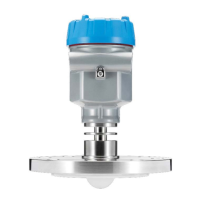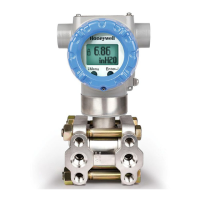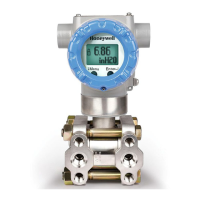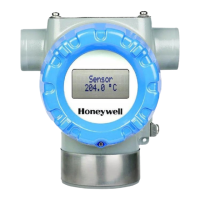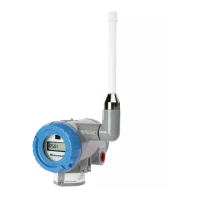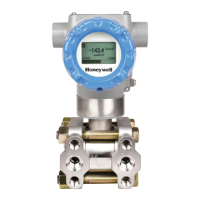Page 92 SLG 700 SmartLine Level Transmitter User’s Manual Revision 8
Consideration is required when selecting intrinsic safety barriers to ensure that they will
supply at least minimum Transmitter voltage (V
XMTR MIN
), including the required 250 Ω of
resistance (typically within the barriers) needed for digital communications.
Transmitter loop parameters are as follows:
R
LOOP MAX
= maximum loop resistance (including barriers and wiring) that will allow
proper Transmitter operation and is calculated as
R
LOOP MAX
= (V
SUPPLY MIN
– V
XMTR MIN
) 21.8 mA.
Where:
V
XMTR MIN
= 14V
If the total loop resistance is too high considering the HART load resistance and intrinsic
safety barrier, consider the following options:
1. Do not add an additional HART load resistance if it is not required. Intrinsic
safety barriers will typically have 250 Ω or more, allowing handheld devices to
communicate in the field. Additional HART load resistance is typically only
required for HART connections in the safe area.
2. Using HART multi-drop mode will effectively allow a higher loop resistance.
See section 1.4.1 for details. This option is not possible if a 4-20 mA output
signal is required.
3. Shunt the HART load resistor in the safe area with a large inductor so that the
HART load impedance remains high at HART signal frequencies, but much
lower at DC. This solution, while it does work, may be physically inconvenient.
For example, a 0.5 Henry 30 Ω choke in parallel with a 250 Ω HART resistor
will serve this purpose.
4. Use an intrinsic safety isolator instead of a shunt diode barrier. These devices
will provide more voltage to the transmitter since the HART load resistance in
the safe area is isolated from the transmitter loop. These devices are sometimes
called smart transmitter barriers or supplies, or repeater power supplies. Ensure
that the isolator will pass HART signal frequencies in both directions.
For wiring transmitters in hazardous area locations, also refer to Section 9 for more
information.
Loop wiring is connected to the Transmitter by simply attaching the positive
(+) and negative (–) loop wires to the first two terminals on the left, marked
with LOOP+ and LOOP- on the transmitter body in the Electronic Housing as
shown in Figure 3-45. The third terminal to the right is a TEST terminal and is
only used for loop current diagnostics / measurements.
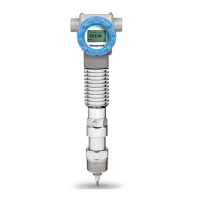
